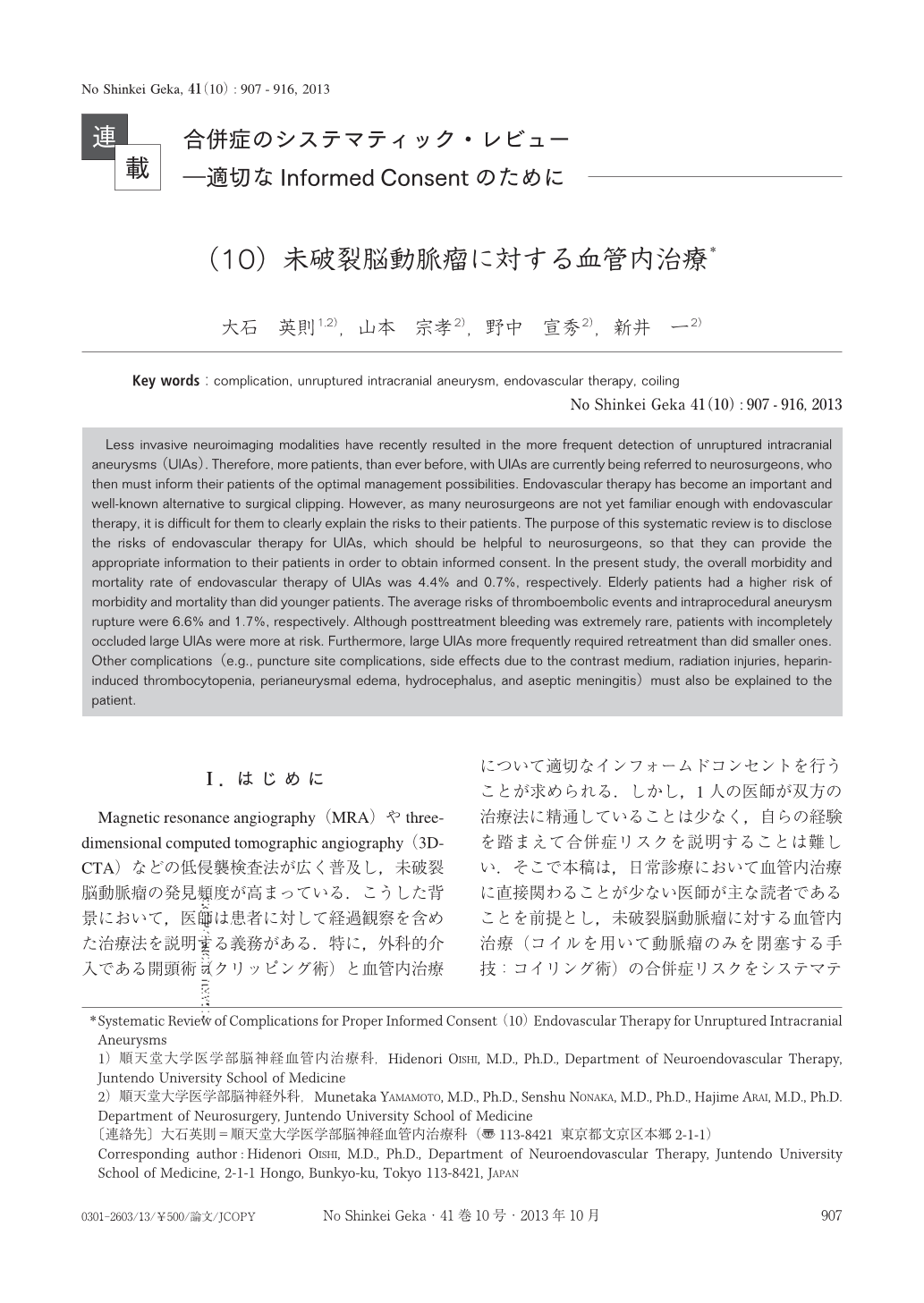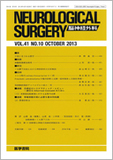Japanese
English
- 有料閲覧
- Abstract 文献概要
- 1ページ目 Look Inside
- 参考文献 Reference
Ⅰ.はじめに
Magnetic resonance angiography(MRA)やthree-dimensional computed tomographic angiography(3D-CTA)などの低侵襲検査法が広く普及し,未破裂脳動脈瘤の発見頻度が高まっている.こうした背景において,医師は患者に対して経過観察を含めた治療法を説明する義務がある.特に,外科的介入である開頭術(クリッピング術)と血管内治療について適切なインフォームドコンセントを行うことが求められる.しかし,1人の医師が双方の治療法に精通していることは少なく,自らの経験を踏まえて合併症リスクを説明することは難しい.そこで本稿は,日常診療において血管内治療に直接関わることが少ない医師が主な読者であることを前提とし,未破裂脳動脈瘤に対する血管内治療(コイルを用いて動脈瘤のみを閉塞する手技:コイリング術)の合併症リスクをシステマティック・レビューすることで,インフォームドコンセントを行う上での一助となることを目的とした.したがって,クリッピング術とコイリング術の優越を比較するものではなく,母血管永久閉塞術を含めた検討は行っていない.
コイリング術もクリッピング術と同様に対象とする患者や術者の力量によって治療成績は大きく異なる.このため,合併症リスクは患者および術者側の背景を鑑みて総合的に判断されるべきものであり,過去の論文データから捉えられる数値を鵜呑みにして説明できるものではないことは強調したい.
Less invasive neuroimaging modalities have recently resulted in the more frequent detection of unruptured intracranial aneurysms(UIAs). Therefore, more patients, than ever before, with UIAs are currently being referred to neurosurgeons, who then must inform their patients of the optimal management possibilities. Endovascular therapy has become an important and well-known alternative to surgical clipping. However, as many neurosurgeons are not yet familiar enough with endovascular therapy, it is difficult for them to clearly explain the risks to their patients. The purpose of this systematic review is to disclose the risks of endovascular therapy for UIAs, which should be helpful to neurosurgeons, so that they can provide the appropriate information to their patients in order to obtain informed consent. In the present study, the overall morbidity and mortality rate of endovascular therapy of UIAs was 4.4% and 0.7%, respectively. Elderly patients had a higher risk of morbidity and mortality than did younger patients. The average risks of thromboembolic events and intraprocedural aneurysm rupture were 6.6% and 1.7%, respectively. Although posttreatment bleeding was extremely rare, patients with incompletely occluded large UIAs were more at risk. Furthermore, large UIAs more frequently required retreatment than did smaller ones. Other complications(e.g., puncture site complications, side effects due to the contrast medium, radiation injuries, heparin-induced thrombocytopenia, perianeurysmal edema, hydrocephalus, and aseptic meningitis)must also be explained to the patient.

Copyright © 2013, Igaku-Shoin Ltd. All rights reserved.


